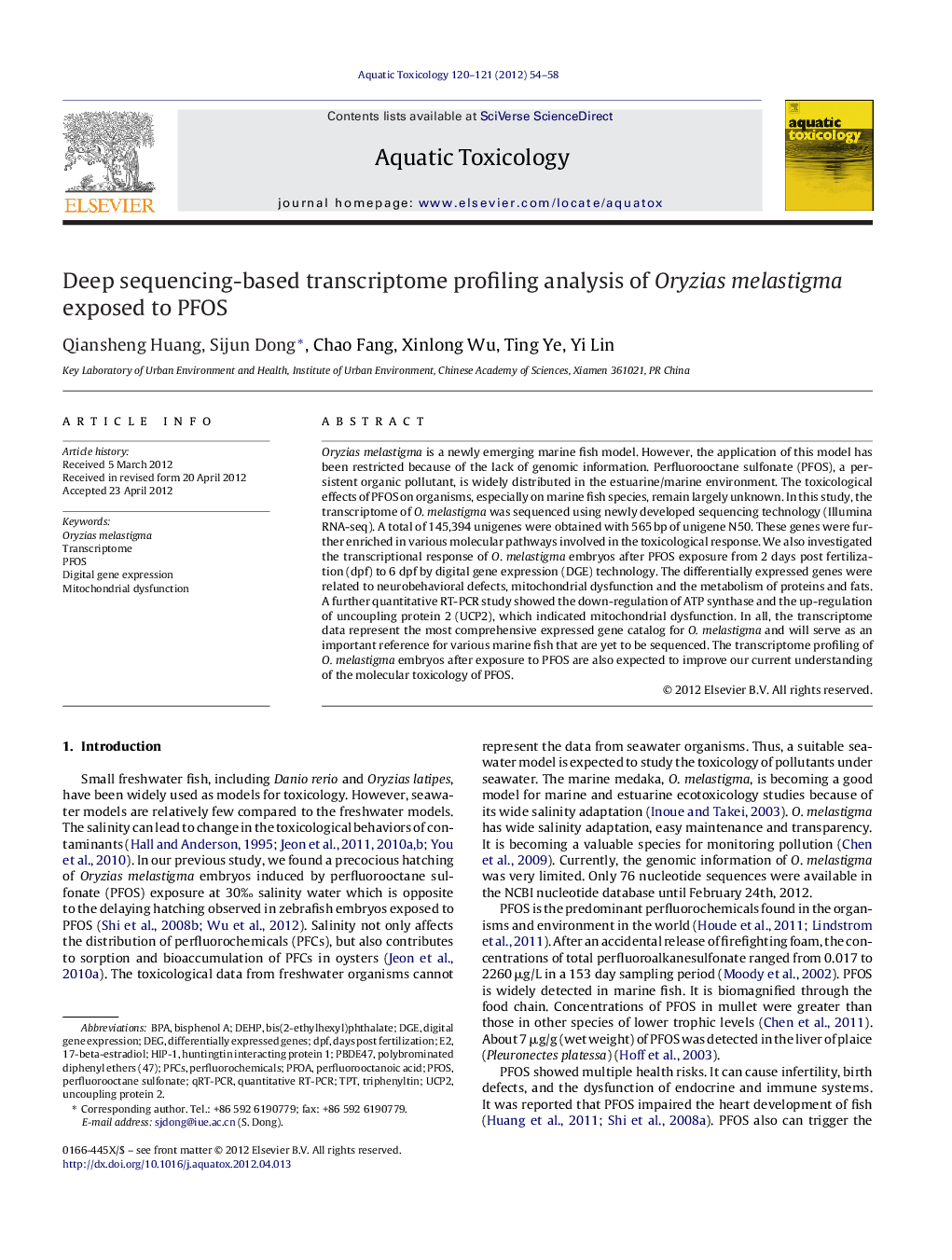| Article ID | Journal | Published Year | Pages | File Type |
|---|---|---|---|---|
| 4529569 | Aquatic Toxicology | 2012 | 5 Pages |
Oryzias melastigma is a newly emerging marine fish model. However, the application of this model has been restricted because of the lack of genomic information. Perfluorooctane sulfonate (PFOS), a persistent organic pollutant, is widely distributed in the estuarine/marine environment. The toxicological effects of PFOS on organisms, especially on marine fish species, remain largely unknown. In this study, the transcriptome of O. melastigma was sequenced using newly developed sequencing technology (Illumina RNA-seq). A total of 145,394 unigenes were obtained with 565 bp of unigene N50. These genes were further enriched in various molecular pathways involved in the toxicological response. We also investigated the transcriptional response of O. melastigma embryos after PFOS exposure from 2 days post fertilization (dpf) to 6 dpf by digital gene expression (DGE) technology. The differentially expressed genes were related to neurobehavioral defects, mitochondrial dysfunction and the metabolism of proteins and fats. A further quantitative RT-PCR study showed the down-regulation of ATP synthase and the up-regulation of uncoupling protein 2 (UCP2), which indicated mitochondrial dysfunction. In all, the transcriptome data represent the most comprehensive expressed gene catalog for O. melastigma and will serve as an important reference for various marine fish that are yet to be sequenced. The transcriptome profiling of O. melastigma embryos after exposure to PFOS are also expected to improve our current understanding of the molecular toxicology of PFOS.
► The transcriptome of O. melastigma was sequenced. ► The unigenes were enriched in various molecular pathways. ► The transcriptome response of O. melastigma embryos was measured after exposure to PFOS. ► PFOS induced mitochondria dysfunction.
